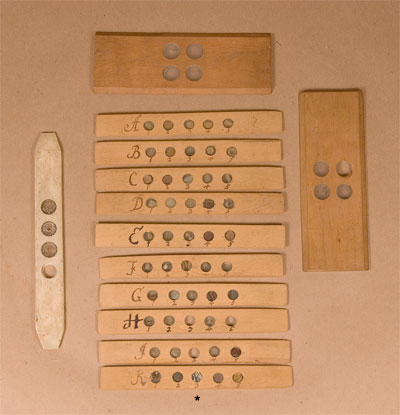
Ten wooden (conifer, 1.5x11.8cm) slides labeled "A" through "K" ("I" missing). Each with five samples. Most are inorganic samples (metal, minerals, paper), but a few are plant stem transverse sections.
Two large wooden sample holders (4.2x11.2cm), each containing four samples
One ivory sample holder (1.6x13.8cm).
The language is probably French, based on the following considerations*:
1. first line: you can read <...l s'e...>. This is consistent with many French sentences ("il s'eleve"... "il s'entretien"...), but little or no Italian ones.
2. second line: the only complete word is <il>, which could either be the Italian article (= "the"), or the French pronoun (= "he, it").
The word preceding <il> ends with <is>. many French word end like this (mais = but; mois = month; autrefois = in old times; pois = spot... and so many more!), whereas the only Italian word I can recall is "mais" (maize, corn). But in this case, the article would precede the noun ("il mais", rather than "mais il").
The third word in second line (beginning with <ce>) could be either French or Italian, or any other Western language, but its position after <il> makes me think of the French "il ce que..." (=which). In addition, I think (we can) exclude Spanish, as the article should be <el>, and not <il>.
3. third line: <procl> could be the French word <proclamation> (Italian <proclamazione>), possibly related to the Pope figure sketched on the other side. <proch> could also be fitting, and in that case it could be the French word <procheme> (=next)..
In conclusion, (it is probably) French, although I cannot completely exclude Spanish. For sure it is not Latin, since <s'e...> or <il> would make no sense.
*Mario Detullio
Professore Aggregato di Biologia Vegetale
Dipartimento di Biologia e Patologia Vegetale
Universita' di Bari, Italia

